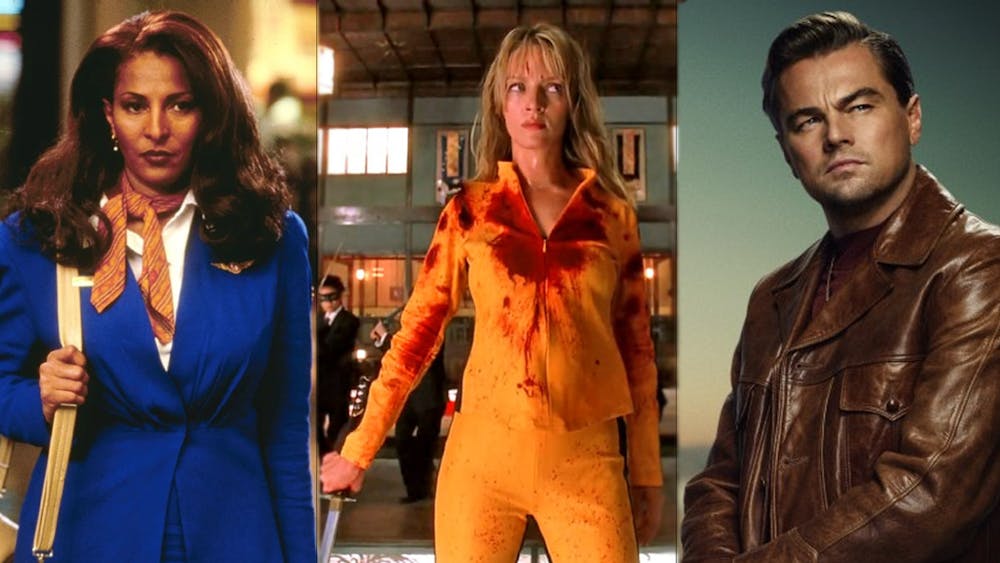From a young age, Quentin Tarantino has been interested in movies. Tarantino’s writing is inspired by movies, books, and spaghetti western film director Sergio Corbucci. Tarantino follows a nonlinear storytelling style: We can see in the films Reservoir Dogs, Inglorious Basterds, and the Kill Bill volumes that he jumps around storylines. In Once Upon a Time…in Hollywood, the audience bounces between Sharon Tate, Rick Dalton, and Cliff Booth’s storylines.
Tarantino’s movies often have themes like revenge, the underdog, and guilt. These themes can be seen in Once Upon a Time…, and in Kill Bill: Volume 1, in which a mother wants revenge on the people who killed her baby. Dr. Mullins, a Ball State University associate professor of English, describes Tarantino as, “A really apt student of film genre and technology. He understands that to make a compelling western or crime genre film you need to study westerns and crime genre films.” You can see these elements in the Kill Bill films as well; in Kill Bill: Volume 1 the character Budd worked as part-bartender/part-assassin and exhibits western and crime genre characteristics—and that’s not even mentioning the immeasurable number of killings between the two movies.
Some of Tarantino’s movies have brought on negative media attention, such as Django Unchained’s racist language and his inclusion of Manson cult killings in Once Upon a Time…. Regardless of those who criticize his work, Tarantino’s movies are well known amongst movie critics and the public. Listed from best to worst, here are some of Tarantino’s most well-known films, ranked.
Kill Bill: Volumes 1 and 2 (2003-2004)
Tarantino’s most personal film, the first Kill Bill is about a woman who wakes up from a coma, post-wedding massacre and wants to kill everyone as revenge for killing her baby at the massacre. It features Uma Thurman’s character, The Bride, as she works her way through numerous antagonists. This storyline continues into the second movie, in which The Bride is continuing her revenge-driven mission, only this time she knows her daughter is alive. Dr. Mullins appreciates the film’s “relentless female protagonist and its homage to the many amazing martial arts films that have been coming out of China and Japan for many decades now.” These movies are high on my list, and I think the first film does a great job of including different graphics into the film; for example, I love how O-Ren’s background story is in comic-like cartoon graphics. As the audience watches O-Ren as she witnesses her parents’ deaths, the graphic scenes incorporate written action, an example of the comic book influence. As it can be seen in the O-Ren scene, both movies provide great fighting scenes.

Inglorious Basterds (2009)
Tarantino’s sixth movie follows a group of Jewish soldiers and a theater owner as they separately plan to assassinate Nazi officers. Dr. Mullins likes how Tarantino uses “what we know about certain historical events to play with our expectations and create tension around what we know actually happens versus what we assume is going to happen in the story.” The film is different from what you would expect as it has a comedic angle to it that gives the movie an edge. I think it does a great job of adding background information on the characters and it kept me drawn in. My favorite scenes are the opening scene, for its dialogue and intensity, and when Shoshanna gets ready for the opening night of Frederick’s film. The lighting and angles of the shots used for the scene are all very complimentary.

Reservoir Dogs (1992)
The film surrounds a group of thieves as they deal with the after-effects of a heist gone wrong. An undercover cop works amongst five other criminals to perform a robbery, and we watch the group crumble under the pressure of the police as they realize there’s a cop among them. When the tension rises, the characters panic and the film ends with one of the six men, who spoke about remaining calm throughout the film, escaping with the diamonds.
I found this film to be captivating with quick, witty dialogue, and the only slow thing about this movie is when Mr. Blonde dances to “Stuck in the Middle with You” by Stealer Wheel before he goes in for the kill. You can watch that scene here.
As the movie takes place within a short time frame, there is no real character arc in this film. Dr. Mullins said, “Reservoir Dogs is an interesting film because there was nothing like it at the time. The story structure is interesting, and the violence is over the top, even for the crime, heist genre. That’s the film that brought him to everyone’s attention.” This was Tarantino’s first film as a writer-director, and it made it to the Sundance Film Festival.
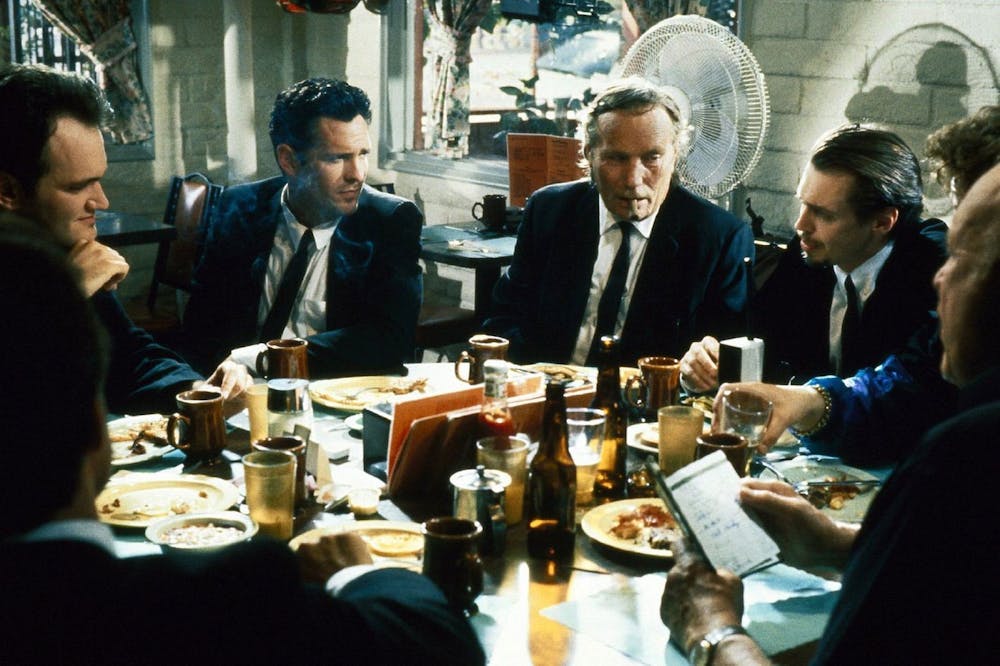
Pulp Fiction (1994)
Pulp Fiction follows what Dr. Mullins describes as, “a kind of ‘retro’ style made contemporary. [Tarantino] loves Spaghetti Westerns, old B-movies, and exploitation films from the ‘60s and ‘70s, as well as over the top violence bordering on horror film tropes.” Tarantino’s second movie follows four character storylines that are intertwined with each other. John Travolta had his comeback in the film, working alongside Uma Thurman, Samuel L. Jackson, Bruce Willis, and plenty of other well-known actors.
The film won three awards: Palme d’Or at Cannes Film Festival, Best Original Screenplay by the Academy, and a Golden Globe. The dialogue in Pulp Fiction is well done, especially considering the movie switches between four storylines. Tarantino’s skill of writing dialogue impresses Dr. Mullins: “I also like how he plays with structure and how he’ll put non-essential scenes into his films (particularly the ones he’s directing) that bring tone and theme to the film but aren’t really essential to forwarding the plot—but that’s the kind of thing a big name writer/director can do: Have it their way.”
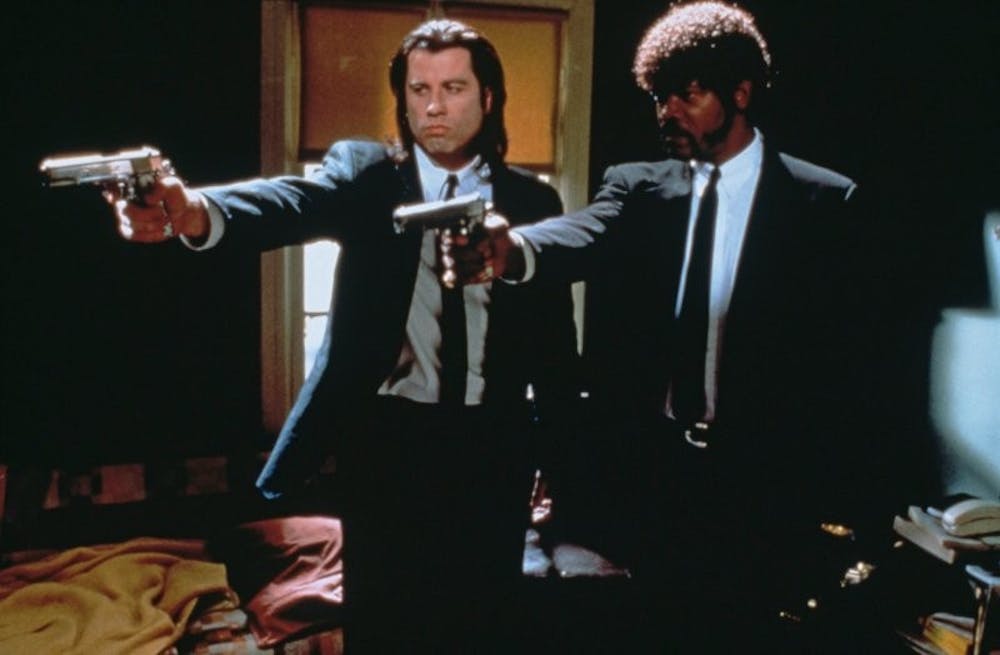
Once Upon a Time…In Hollywood (2019)
Winning two Golden Globes, Once Upon a Time… in Hollywood bounces between a soon-to-be has-been actor, Rick Dalton; his stunt double, Cliff Booth; and budding actress Sharon Tate as they survive Hollywood. While the movie mostly focuses on Rick Dalton and his career, you may have noticed Sharon Tate’s name and heard a little bell ring. Well, the ninth film of Tarantino also takes place during the peak of Charles Manson’s cult, The Family’s, lifetime. The film offers a surprising twist at the end that leaves me surprised, a little grossed out, and laughing. The movie makes good references to other directors like Sergio Corbucci and films like The Green Hornet. I enjoyed the effortless way he intertwined the different characters. He did it in a way that allowed the audience to connect to the characters.
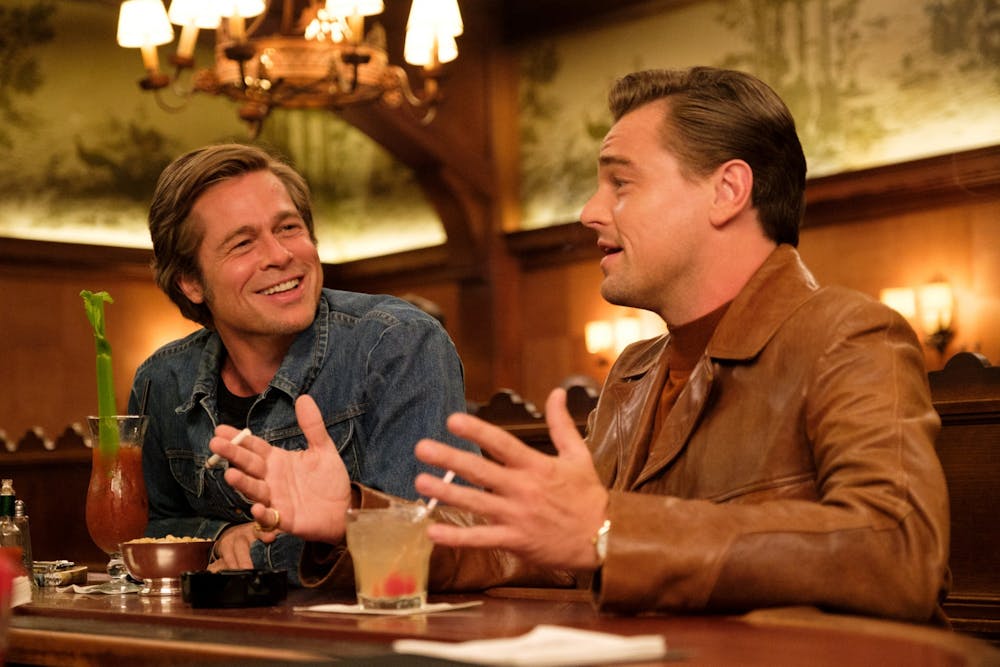
Django Unchained (2012)
A good western, the film won an Academy award and a Golden Globe award in 2013 and features Jamie Foxx and Leonardo DiCaprio as Django and Calvin Candie, respectively. Django and Dr. King Schultz (Christoph Waltz) set out for a bounty hunt as well as for Django’s wife. My favorite scene is when Django decides what clothes he’d like to wear, and he goes for the bold, blue look. Overall, this movie moves quickly, and the dialogue does a great job of allowing the character’s tones and emotions to carry through.

Jackie Brown (1997)
Some of Tarantino’s movies are considered “hangout movies” because the audience is able to get to know the characters. Jackie Brown is a good example of that. If you found the movie to be slow, consider watching it one more time. For reference, it had to grow on me. In the movie’s Blu Ray extras, Tarantino describes the film as one that gets better the more you watch it.
Something interesting about the movie is how it gives a few different versions of the same events through Max Cherry, Jackie Brown, and Louis and Melanie’s point of view. Max Cherry and Jackie Brown mostly got what they wanted when they survived the events with money to spend, but they left on separate journeys.
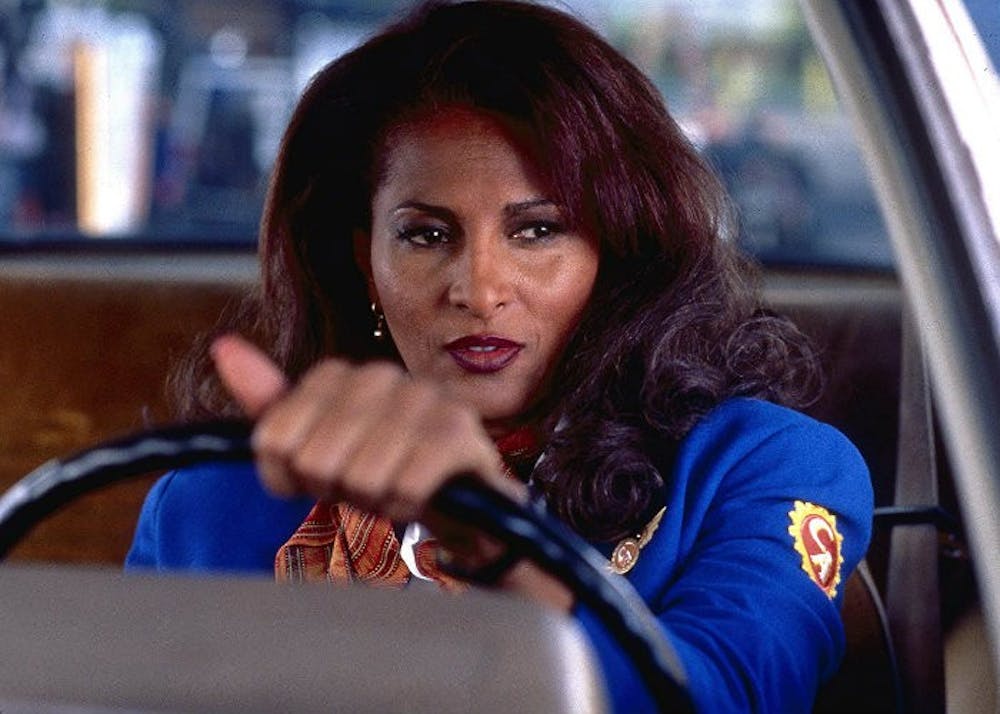
The Hateful Eight (2015)
During a blizzard, a group of people seek shelter in a cabin while the owner is away. Once everyone settles in, it doesn’t take long to realize something is off. While the movie does feel long, it does a great job of setting the scene. Filled with tension and motivation, the movie created lots of energy through sound. For the film, Tarantino had composer Ennio Morricone write original music for it, one of many original things about the film. Dr. Mullins sees Tarantino as “a signature artist. By that I mean he’s unique and instantly recognizable in his style. You know a Dali or Pollock the instant you see one. The same with a Miles Davis trumpet solo or a Jimi Hendrix guitar solo. Tarantino is that way with his films.”
While I personally find the film to be long and slow, the anticipation of waiting is worth it as the dialogue is specific and the climax scenes are always graphic.
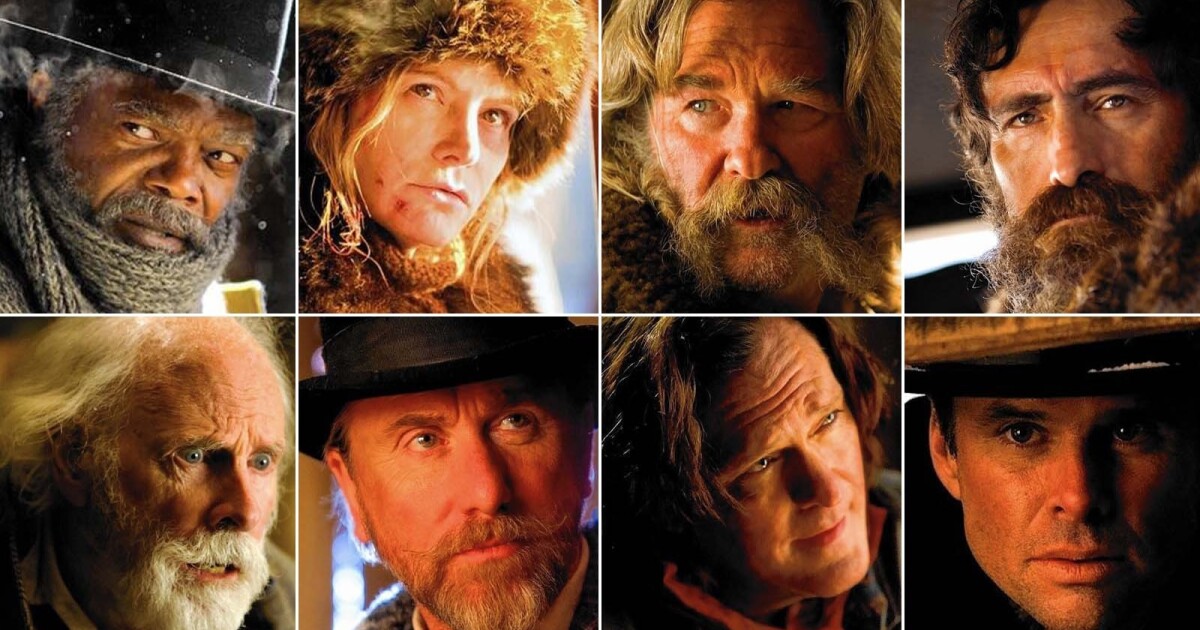
Would you rank his movies differently? Create your own list by clicking on the survey below!
Sources: Ball State University, BFI, IMDB, LitReactor, YouTube
Images: Film School Rejects, Los Angeles Times, NY Daily News, The New Yorker, The Telegraph, TIME, USA Today, Vulture
Featured Image: Kellyn Harrison
















